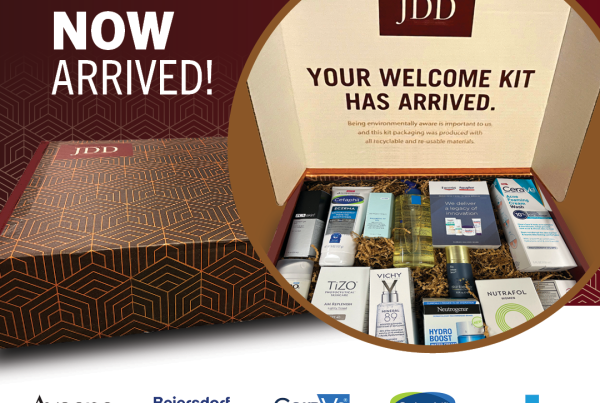Skin Cancer
Stay up-to-date on new clinical findings in Skin Cancer View the latest articles, case reports, supplements, podcast episodes and more!

Articles
Basal Cell Carcinoma Gene Mutations Differ Between Asian, Hispanic, and Caucasian Patients: A Pilot Study
Do gene mutations in basal cell carcinoma vary between Hispanic, Asian and Caucasian patients? How do gene mutations in skin of color inform therapy options and course of treatment?
The Potential Efficacy of β-Blockers on Melanoma Survival: A Narrative Review
What is the role of role and status of β-blockers in melanoma management?
A Review of Hedgehog Inhibitors Sonidegib and Vismodegib for Treatment of Advanced Basal Cell Carcinoma
Compare systemic Hedgehog inhibitors (HHIs) sonidegib and vismodegib for efficacy, safety, and pharmacokinetics. [FREE TEXT]
Sponsored
Case Reports
Basal Cell Carcinoma in the Nasal Vestibule
Basal cell carcinomas (BCC) arise from DNA damage to cells of the basal layer of the epidermis and most commonly in areas of the skin exposed to sunlight or ultraviolet radiation. BCC is the most common skin cancer seen in humans with over 4.3 million cases reported in the United States and is responsible for 3-10% of all cancers annually. We report what we believe to be the first case of this very prevalent skin cancer arising in the nasal vestibule. The lesion was treated with Mohs micrographic surgery and required three stages to obtain histological clearance. Given the location of the tumor, Mohs surgery was chosen due to the procedure’s effectiveness for achieving the highest cure rate with the lowest incidence of tumor recurrence and for preserving as much adjacent healthy tissue as possible
Combination Topical Chemotherapy for the Treatment of an Invasive Cutaneous Squamous Cell Carcinoma
Standard of care for squamous cell carcinoma (SCC) is usually surgical, with either excision or Mohs micrographic surgery. However, surgery may not be ideal for elderly patients with numerous lesions, who are poor surgical candidates or who refuse surgery. Topical 5-fluorouracil (5-FU) and imiquimod have been studied off-label as monotherapies in the treatment of SCC in situ with promising results. However, long-term tumor-free survival rates are still less than with surgical management.
Recurrent Squamous Cell Carcinoma Arising Within a Linear Porokeratosis
Here we report a case of linear porokeratosis with recurrent malignant degeneration to squamous cell carcinoma (SCC) recurring six years after excision of initial SCC. A 79-year-old woman presented with a friable tumor located within a longstanding lesion on her posterior thigh. Six years prior, she was diagnosed with SCC arising within the same lesion, which had been surgically excised with negative margins. Physical examination revealed a 3.5 x 2.7 cm friable tumor on the left proximal posterior thigh.
Podcast Episodes
Support the (On)cause: A Practical Review of Supportive Oncodermatology
Dr. Mario Lacatoure joins podcast host Dr. Adam Friedman to discuss the array of cutaneous clusters that not only can, but are almost expected to occur during cancer therapy. Learn how even simple OTC products can contribute to both ameliorating and even preventing some of these sequelae.
Variations in Skin Cancer Screening Practices Among Dermatologist
Dr. Adam Friedman and Dr. Evan Rieder, Assistant Professor of Dermatology at NYU Langone Medical Center and one of the few dermatologists double board certified in dermatology and psychiatry in the U.S., to discuss his recent study entitled “Dermatologist Practices During Total Body Skin Examinations: A Survey Study.” Do we all do it the same? Are we all checking every nook and cranny? Do we need better standardization for our greatest weapon to enable early and life saving skin cancer detection?
Sponsored
Supplements
Skin Cancer in Hispanics in the United States
The American Cancer Society reported that Cancer remains leading cause of death in Hispanics. Lung cancer for men and breast for women. Non-melanoma skin cancer (NMSC) is the most common malignancy in the United States, over 3.5 million in over 2 million people, incidence rising at about 2.6% per year.
Sponsored
Dermatology News

The Overlooked Burden: Psychodermatologic Needs of Hispanic and Latinx Communities in the United States









